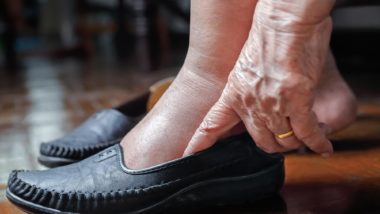Top Class Actions’s website and social media posts use affiliate links. If you make a purchase using such links, we may receive a commission, but it will not result in any additional charges to you. Please review our Affiliate Link Disclosure for more information.
A recent study published in the Annals of Internal Medicine earlier this year has shed more light on the possible connection between type-2 diabetes drugs SGLT2 inhibitors and a possibly fatal bacterial infection.
About the Annals of Internal Medicine Study
The study was published in June 2019 after several years of data had been collected. It tracked 55 patients who were prescribed SGLT2 inhibitors for treatment of diabetes who were diagnosed with necrotizing fasciitis, a dangerous infection also known as Fournier’s gangrene, or flesh-eating bacteria.
All of the cases of necrotizing fasciitis were reported to the FDA’s Adverse Event Reporting System, and occurred over a period of six years, ending on Jan. 31, 2019. Of the 55 severely ill patients in the study, several required surgical intervention including debridement and skin grafts to repair the damage caused by the infection. Two patients required amputations to stop the spread of the infection. 18 of the patients in the study had taken the SGLT2 inhibitor Jardiance, and 16 were prescribed Farxiga.
The Annals of Internal Medicine study is not the first SGLT2 inhibitor study to link Farxiga and Jardiance with an increased risk of developing necrotizing fasciitis. Other research over the past several years has linked these medications to the serious infection.
Despite this research, sales for Jardiance and Farxiga have continued to grow. In 2018, Jardiance sales went up by 47 percent, while Farxiga’s increased by 30 percent.
The link between the use of drugs like Farxiga and Fournier’s gangrene diagnoses has resulted in new warnings from the FDA regarding this and other diabetes medications.
Last summer, the Food and Drug Administration (FDA) issued a requirement that all SGLT2 inhibitors have a warning that they may cause the patient to become susceptible to Fournier’s gangrene.
The flesh-eating bacterial infection starts in the perineum, which is the skin that lies between the genitals and the rectum. It can then move quickly to other areas of the body and become fatal.
Flesh-eating bacteria is also known as necrotizing fasciitis because the infection literally kills the affected tissue. Even though the condition is rare, researchers warn there has been an uptick in the number of cases reported since the introduction of SGLT2 inhibitors.
In the 30 years prior to 2013, the FDA’s database only contained six confirmed cases of Fournier’s gangrene. Between March 2013 and May 2018, the FDA received 12 reports of the necrotizing fasciitis and noted that the first SGLT2 inhibitor was placed on the market in March 2013. That drug was Invokana.
In addition to Farxiga, other SGLT2 inhibitors include Invokana, Invokamet, Qtern, Jardiance, Steglujan and Xigduo XR. This class of medications works by redirecting excess sugars from the blood away from the bloodstream and out through the urine.
Risks of Farxiga and Fournier’s Gangrene
Research has yet to determine why these medications lead to an increased risk of necrotizing fasciitis of the perineum, but the condition is serious.
In the dozen cases reported since 2013, seven were found in men and five were found in women. The patients all needed to be hospitalized and placed on IV antibiotics. They all required surgical intervention to remove the damaged and infected tissue to stop the spread of the infection. Several patients ended up needing more than one surgery that resulted in disfigurement; one patient died.
Anyone taking SGLT2 inhibitors should be aware of the increased risk of developing Fournier’s gangrene. The flesh-eating infection can quickly spread from the perineum to the genitals, thighs, stomach, and chest.
Patients taking Farxiga should be aware of their risk of Fournier’s gangrene is heightened if they have been diagnosed with a urinary tract infection, bladder infection or abscesses. Women who are taking Farxiga and undergo a hysterectomy need to ensure they are healing properly.
Men with Fournier’s gangrene often don’t have their testicles infected because a separate blood supply runs to the testes. Mortality averages 20 to 30 percent, according to the National Institutes for Health.
Flesh-eating bacterial infections most often enter the body through a cut or scrape, burn, puncture wound or surgical wound, but some cases have been seen in people who have suffered blunt trauma without a skin break.
Initial symptoms include redness or swollen genitals, severe pain, fever and generally feeling ill.
Advanced symptoms of flesh-eating bacteria can include blisters, pus coming from the infected area, dizziness, nausea or fatigue.
According to the Centers for Disease Control, Fournier’s gangrene requires hospitalization and the use of IV antibiotics to combat the infection. When the bacteria has killed so much tissue that blood flow is hampered, the IV antibiotic is unable to get to the infection to fight it. Doctors remove the dead tissue, which sometimes takes several surgeries to ensure only healthy tissue remains.
Join a Free Diabetes Medications & Flesh-Eating Infection Lawsuit Investigation
The type-2 diabetes medications linked to the flesh-eating infection include:
- Invokana
- Invokamet/Invokamet XR
- Farxiga
- Xigduo XR
- Qtern
- Jardiance
- Glyxambi
- Synjardy/Synjardy XR
- Steglato
- Segluromet
- Steglujan
If you or a loved one took one of the type-2 diabetes medications listed above and suffered from a flesh-eating genital infection, you may qualify to join this diabetes medication lawsuit investigation. Fill out the FREE form on this page for more information.
ATTORNEY ADVERTISING
Top Class Actions is a Proud Member of the American Bar Association
LEGAL INFORMATION IS NOT LEGAL ADVICE
Top Class Actions Legal Statement
©2008 – 2024 Top Class Actions® LLC
Various Trademarks held by their respective owners
This website is not intended for viewing or usage by European Union citizens.
Get Help – It’s Free
Join a Free Diabetes Medications & Flesh-Eating Infection Lawsuit Investigation
If you qualify, an attorney will contact you to discuss the details of your potential case at no charge to you.
PLEASE NOTE: If you want to participate in this investigation, it is imperative that you reply to the law firm if they call or email you. Failing to do so may result in you not getting signed up as a client or getting you dropped as a client.
E-mail any problems with this form to:
Questions@TopClassActions.com.
Oops! We could not locate your form.













